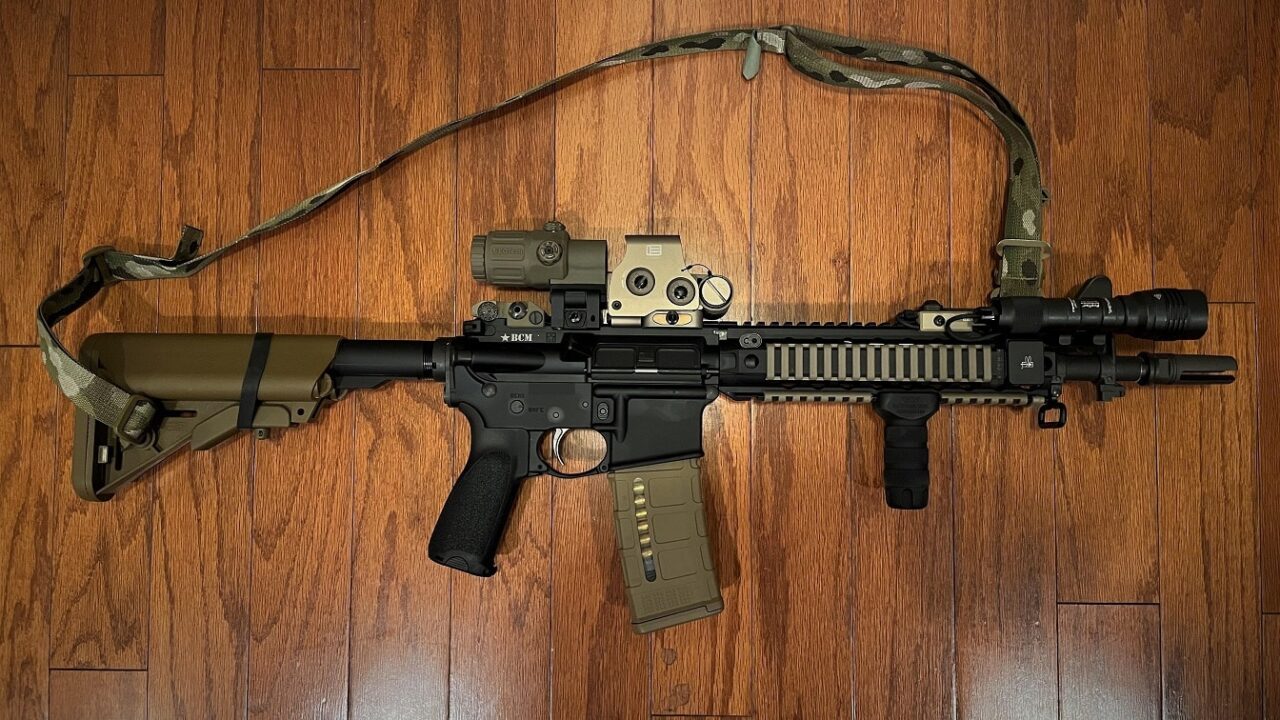Last year, a three-judge panel of the United States Fifth Circuit of Appeals upheld the Trump-era rule banning the ownership of so-called “bump stocks,” which essentially enable semiautomatic weapons to fire continuously – making the weapons operate much like a machine gun.
“ATF’s interpretation of the statute is the best interpretation,” wrote U.S. Circuit Judge Stephen A. Higginson, a Barack Obama appointee. “The phrase ‘single function of the trigger,’ as used in the National Firearms Act, means ‘a single pull of the trigger and analogous motions.'”
From 2008 to 2017, the Bureau of Alcohol, Tobacco, Firearms, and Explosives (ATF) had essentially allowed for the sale and ownership of bump stocks and concluded that the items were not “machine guns,” and therefore not illegal. Following the Oct. 1, 2017, Las Vegas mass shooting, in which 64-year-old Stephen Paddock armed himself with several bump stock-equipped firearms and sprayed bullets at a large crowd, there will call to ban the item.
The next year, then President Donald Trump called for a ban. Under a subsequent review, the ATF determined that bump stocks do indeed “produce automatic fire with a single pull of the trigger.”
Given those facts, it is not surprising that the ATF issued a letter on Thursday, stating that it recently examined devices commonly known as “forced reset triggers” (FRTs). The agency announced that it has determined that some of those devices are “firearms” and “machineguns” as defined in the National Firearms Act of 1934 (NFA), and “machineguns” as defined in the Gun Control Act of 1968 (GCA).
“These particular FRTs are being marketed as replacement triggers for AR-type firearms. Unlike traditional triggers and binary triggers (sometimes referred to generally as ‘FRTs’), the subject FRTs do not require shooters to pull and then subsequently release the trigger to fire a second shot. Instead, these FRTs utilize the firing cycle to eliminate the need for the shooter to release the trigger before a second shot is fired. By contrast, some after-market triggers have similar components but also incorporate a disconnector or similar feature to ensure that the trigger must be released before a second shot may be fired and may not be machineguns,” the ATF stated.
Both the NFA and GCA regulate machineguns, which are defined under 26 U.S.C. § 5845(b) and 18 U.S.C. § 921(a)(23) as
Any weapon which shoots, is designed to shoot, or can be readily restored to shoot, automatically more than one shot, without manual reloading, by a single function of the trigger. The term shall also include the frame or receiver of any such weapon, any part designed and intended solely and exclusively, or combination of parts designed and intended, for use in converting a weapon into a machinegun, and any combination of parts from which a machinegun can be assembled if such parts are in the possession or under the control of a person.
According to the ATF’s examination, it found that some FRT devices would allow a firearm to automatically expel more than one shot with a single, continuous pull of the trigger. For that reason, the ATF has concluded that FRTs that function in this way are a combination of parts designed and intended for use in converting a weapon into a machine gun, and hence, ATF has classified those devices as a “machine gun” as defined by the NFA and GCA.
“ATF’s position is that any FRT that allows a firearm to automatically expel more than one shot with a single, continuous pull of the trigger is a “machinegun”, and is accordingly subject to the GCA prohibitions regarding the possession, transfer, and transport of machineguns under 18 U.S.C. §§ 922(o) and 922(a)(4). They are also subject to registration, transfer, taxation, and possession restrictions under the NFA. See 26 U.S.C. §§ 5841, 5861; 27 CFR 479.101,” the agency’s letter added.
It also noted that under 26 U.S.C. § 5871, any person who violates or fails to comply with the provisions of the NFA may be fined up to $10,000 per violation and is subject to imprisonment for a term of up to ten years. Further, pursuant to 26 U.S.C. § 5872, any machinegun possessed or transferred in violation of the NFA is subject to seizure and forfeiture. Under 18 U.S.C. § 924(a)(2), any person who violates § 922(o) may be sent to prison for up to 10 years and fined up to $250,000 per person or $500,000 per organization.
Based on its recent determination, the ATF also announced that it would take appropriate remedial action with respect to sellers and possessors of such devices. It also urged current possessors of these devices to contact ATF for further guidance on how they may divest possession.
Despite a common misconception, the National Firearms Act of 1934 did not ban ownership of machine guns or other firearms. Rather it highly restricted the ownership of those items and required a significant background check to “transfer” such items. Currently, 37 states allow residents to purchase and complete a transfer of such firearms.
Now a Senior Editor for 1945, Peter Suciu is a Michigan-based writer who has contributed to more than four dozen magazines, newspapers, and websites. He regularly writes about military hardware, and is the author of several books on military headgear including A Gallery of Military Headdress, which is available on Amazon.com. Peter is also a Contributing Writer for Forbes.

